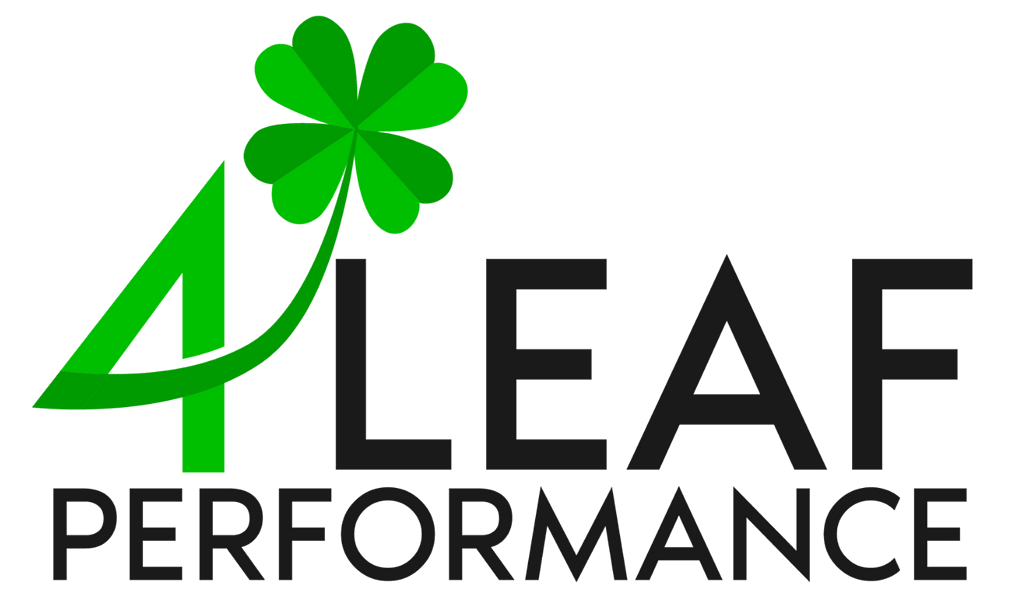Aligning team culture is essential when companies acquire a new business. Merging operations alone won’t guarantee success; how well the workplace cultures of both companies blend can determine the acquisition’s outcome.
Research from McKinsey & Company reveals that 95% of executives consider company culture a key factor in the success of an acquisition. If the acquiring company neglects cultural alignment, even the most well-planned acquisitions can face challenges due to cultural mismatches.
Understanding the Importance of Cultural Alignment
Team culture plays a crucial role in a company’s success. It encompasses the shared values, behaviors, and standards that shape how team members interact and perform their tasks. When two companies merge, aligning these cultural elements is essential for a smooth transition and long-term success.
Neglecting cultural integration can lead to several issues. A lack of alignment between workplace cultures can reduce productivity, as team members may need help to adapt to new ways of working. Additionally, morale can suffer if team members feel disconnected from the new company culture or perceive a lack of direction in merging cultures.
The impact of cultural misalignment extends beyond individual team members. Studies show that acquisitions with poor cultural integration often fail to achieve their intended financial or strategic goals. This is because cultural friction can create bottlenecks in communication, decision-making, and overall collaboration.
Conducting a Cultural Assessment Pre-Acquisition
Conducting a thorough cultural assessment before the business acquisition is crucial for understanding the team cultures of both companies involved. This process helps identify the core values, work styles, and management practices that define each organization’s company culture and set the foundation for successful cultural integration post-acquisition.
- Start with a Cultural Diagnostic: Conduct a cultural diagnostic to gather insights from both organizations. Use a combination of surveys, interviews, and focus groups to understand each company’s workplace culture. The goal is to identify the values, norms, and behaviors that drive team members’ interactions, decisions, and work.
- Surveys: Distribute anonymous surveys to all team members to collect data on their perceptions of the current culture. Include questions about communication styles, decision-making processes, leadership effectiveness, and overall satisfaction.
- Interviews: Conduct one-on-one interviews with key leaders and managers from both companies to gain deeper insights into each organization’s leadership styles and cultural priorities.
- Focus Groups: Organize focus groups with diverse team members to discuss their experiences and expectations regarding team culture. This helps capture different perspectives and identify potential cultural conflicts.
- Analyze the Cultural Data: Once you’ve gathered the data, analyze the results to identify the key elements of each company’s team culture. Look for patterns in how team members perceive their culture and any significant differences between the two organizations.
- Identify Strengths and Weaknesses: Highlight the strengths and weaknesses of each culture. For example, one company may excel in innovation and collaboration, while the other may prioritize efficiency and structure. Understanding these differences is essential for anticipating potential challenges during the integration process.
- Pinpoint Cultural Gaps: Identify cultural gaps that could lead to post-acquisition friction. For instance, if one company has a hierarchical structure while the other promotes a flat organizational model, this could create challenges in aligning workplace cultures.
- Assess Alignment with Business Goals: Consider how each company’s team culture aligns with the strategic goals of the acquisition. Determine whether the cultural elements of both organizations support the overall vision for the merged company.
- Evaluate Cultural Fit: Assess whether the existing company cultures are compatible with the future direction of the merged entity. If there are significant cultural misalignments, you may need to prioritize certain aspects of one culture over the other to achieve strategic objectives.
- Align with Leadership Vision: Ensure that the leadership team’s vision for the new organization aligns with the cultural values identified in the assessment. This alignment is critical for setting the tone for successful cultural integration.
- Develop a Cultural Integration Plan: Use the insights gained from the cultural assessment to develop a detailed integration plan. This plan should outline the steps you’ll take to blend the team cultures effectively.
- Set Cultural Priorities: Decide which cultural elements should be prioritized during integration. For example, if both companies value innovation, this can become a focal point for the new workplace culture.
- Establish Clear Communication Channels: Create communication strategies to keep all team members informed and engaged throughout the integration process. Transparency and consistent messaging are crucial to reducing uncertainty and fostering buy-in.
- Eliminate Preconceived Notions: Approach the cultural assessment with an open mind, free from preconceived notions about either company’s culture. Focus on gathering unbiased data that accurately reflects each organization’s team culture to ensure your integration strategy is inclusive and grounded in reality.

Establishing a Unified Vision and Values
Establishing a unified vision and values involves creating a shared framework that reflects the best aspects of both companies’ team cultures and aligns with the strategic goals of the business acquisition. A well-defined vision and values will guide the merged organization and help build a cohesive and high-performing workplace culture.
Creating a Shared Vision
A shared vision is essential for bringing both teams together with a common purpose. It should clearly articulate how the team culture will support the newly merged businesses’ goals. This vision must resonate with all team members, offering a sense of continuity and pointing toward future growth.
To develop this vision:
- Involve Leadership: Ensure that leaders from both companies collaborate in defining the vision to help ensure buy-in and demonstrate a unified front from the top down.
- Reflect Both Cultures: The vision should integrate elements of both company cultures, highlighting strengths that will drive the merged entity forward.
- Communicate Clearly: The vision must be simple, clear, and inspiring. All team members should easily understand how their roles contribute to achieving this vision.
Crafting New Company Values
Alongside the vision, crafting new company values is vital for setting the standards and behaviors expected within the merged organization. These values should reflect the principles both companies have held dear while aligning with the acquisition’s goals.
To establish these values:
- Identify Core Values: Draw from the team cultures of both organizations to identify shared values that will serve as the foundation of the new company culture. Consider values like innovation, collaboration, and integrity, which can bridge the cultures and provide a strong basis for integration.
- Align with Strategic Goals: Ensure the new values support the strategic goals of the acquisition. For example, suppose the acquisition aims to foster more significant innovation. In that case, one of the core values should emphasize creativity and forward-thinking.
- Involve Team Members: Include input from team members across all levels when crafting these values to foster a sense of ownership and ensure that the values resonate with everyone, not just leadership.
Regular Communication and Reinforcement
Establishing a unified vision and values is only the beginning; maintaining alignment requires ongoing communication and reinforcement. Leaders should consistently communicate the vision and values through various channels, such as meetings, newsletters, and one-on-one conversations.
To reinforce the vision and values:
- Lead by Example: Leadership should embody the vision and values in their daily actions, setting the tone for the entire organization.
- Recognize and Reward: Acknowledge and reward team members who demonstrate behaviors that align with the new company culture to encourage others to adopt these behaviors and reinforce the desired team culture.
- Use Multiple Channels: Ensure that the vision and values are communicated through various formats—written, verbal, and visual—to stay top of mind for all team members.
Communicating the Change Effectively
When two companies merge, team members need clear, consistent messaging to understand how the change will impact their roles. Without proper communication, uncertainty can lead to resistance and decreased morale, hindering the integration process.
Transparent and Consistent Communication
Leaders must prioritize transparent and consistent communication throughout the integration process to foster trust and reduce uncertainty. Be open about the changes, why they’re necessary, and how they will benefit the team.
- Provide Regular Updates: Keep team members informed at every stage. Share updates on key decisions, timelines, and progress. Regular communication helps maintain engagement and ensures everyone is on the same page.
- Use Multiple Channels: Communicate through various channels such as town hall meetings, email newsletters, and internal messaging platforms to ensure that the message reaches all team members, regardless of their location or role.
- Be Honest About Challenges: Don’t shy away from discussing potential challenges or setbacks. Acknowledging difficulties openly can build credibility and foster a shared responsibility for overcoming them.
Addressing Team Concerns
Team members may be concerned about how the change will affect their day-to-day work and place within the newly merged organization. Proactively addressing these concerns is essential for reducing resistance to the change.
- Foster Open Dialogue: Encourage team members to voice their concerns and ask questions. Create forums to share their thoughts, such as Q&A sessions or anonymous feedback channels.
- Listen and Respond: Actively listen to the feedback you receive and respond with empathy and understanding. Address concerns directly and provide clear, actionable answers where possible.
- Acknowledge Uncertainty: Recognize that uncertainty is natural during a period of change. While you may not have all the answers immediately, assure team members that you take their concerns seriously and will provide updates as more information becomes available.
Communicating the Benefits of Integration
Team members must understand how the changes will benefit them and the organization. Leaders must communicate the value of the new company culture and the opportunities it offers very clearly.
- Highlight Positive Outcomes: Emphasize the benefits of the integration, such as new growth opportunities, improved processes, or a stronger, more unified team culture. Frame the change as a positive step for the team and the company.
- Answer “What’s In It for Me?”: Address the critical question in every team member’s mind: “What’s in it for me?” Explain how the changes will improve their work experience through better resources, new career opportunities, or a more supportive workplace culture.
- Share Success Stories: If possible, share examples of successful integrations from other companies or past experiences to help team members visualize the positive outcomes and feel more confident in the integration process.

Building a Cohesive Team Culture
A unified team culture can help team members feel connected and aligned with the company’s goals.
Blending Work Practices and Traditions
One key step in building a cohesive team culture is integrating the work practices, rituals, and traditions of both companies. Each organization likely has its own way of doing things, and finding a balance between these practices is crucial for creating a seamless workplace culture.
- Identify Common Ground: Look for similarities between the two company cultures that can serve as a foundation for the new team culture.
- Respect Differences: Acknowledge and respect the unique aspects of each company’s culture. Instead of trying to eliminate these differences, find ways to incorporate them into the new culture to benefit the entire team.
- Create New Traditions: Introduce new rituals or traditions that reflect the merged organization’s values and vision.
Strengthening Relationships Through Team-Building Activities
Team-building activities are essential for fostering trust and building relationships among team members from both organizations. These activities allow team members to interact in a relaxed, non-work environment, helping them form personal connections that can translate into better collaboration at work.
- Plan Social Gatherings: Organize informal social events, such as team lunches, dinners, or happy hours, where team members can get to know each other outside the office. These gatherings encourage casual conversations and help break down barriers between different groups.
- Host Outdoor Activities: Arrange outdoor activities like group hikes, sports days, or team-building retreats. These activities allow team members to bond through shared experiences and enjoy time together in a non-work setting.
- Create Fun Competitions: Set up friendly competitions, such as trivia nights, board game tournaments, or cooking challenges. These events promote teamwork and allow team members to showcase different talents and interests that may not be visible in the workplace.
- Celebrate Together: Hold celebrations for holidays, birthdays, or company milestones. These events allow team members to come together and celebrate achievements in a fun, relaxed atmosphere.
Appointing Cultural Ambassadors
Cultural ambassadors are crucial in promoting cultural integration and building a cohesive team culture. These team members act as champions of the new culture, helping to address potential conflicts and ensuring that the integration process stays on track.
- Select Cultural Ambassadors: Choose team members from all levels of the organization who are enthusiastic about the new company culture and can serve as role models for others.
- Empower Ambassadors: Give cultural ambassadors the resources and authority they need to promote the new culture effectively. This may include organizing events, leading discussions, or providing feedback to leadership.
- Encourage Engagement: Encourage cultural ambassadors to engage with their peers and address any concerns or challenges during the integration process. Their involvement can help smooth the transition and foster a more positive workplace culture.
Training and Development for Cultural Integration
Investing in targeted training and development programs is essential to ensure a thriving cultural integration after a business acquisition. Training and development bridge gaps between the merging companies’ company cultures and ensure everyone is aligned with the organization’s new standards.
Leadership Development Programs
Leadership plays a crucial role in guiding cultural integration. Developing leaders who can navigate the complexities of a merged company culture is essential for ensuring the integration process’s success.
- Train Leaders on Cultural Integration: Offer leadership development programs focusing on cultural integration. These programs should provide leaders with the skills and knowledge to manage cultural differences, communicate effectively, and drive the new team culture.
- Foster Inclusive Leadership: Encourage leaders to adopt an inclusive approach that values and incorporates diverse perspectives.
- Support Change Management: Provide leaders with training on change management techniques, helping them guide their teams through the transition and maintain alignment with the new company culture.
Mentorship Programs
Mentorship programs can be valuable for fostering cultural integration and building stronger connections between team members from different backgrounds.
- Pair Team Members Strategically: Match mentors and mentees from different parts of the organization to encourage cross-cultural learning. This helps team members gain new perspectives and build relationships across the merged company.
- Provide Guidance and Support: Offer guidance to mentors on how to address cultural differences and support their mentees in adapting to the new team culture.
- Encourage Continuous Learning: Promote ongoing learning and development through mentorship relationships, helping team members stay engaged and aligned with the evolving workplace culture.

Monitoring and Adapting the Integration Process
Successful cultural integration doesn’t happen overnight. It requires ongoing monitoring and a willingness to adapt as needed. By regularly assessing the integration process’s progress and making necessary adjustments, companies can ensure that the new team culture continues to evolve in a way that supports both the organization’s goals and the well-being of its team members.
Tracking Progress with Metrics
To effectively monitor the integration process, it’s crucial to establish clear metrics to provide insights into how well the team culture is taking shape. These metrics should cover both qualitative and quantitative aspects of the workplace culture.
- Employee Surveys: Conduct regular surveys to gather feedback from team members about how they perceive the new company culture. These surveys can provide valuable insights into areas where the integration succeeds, and adjustments may be needed.
- Performance Metrics: Track key performance indicators (KPIs) such as productivity, collaboration, and retention rates. These metrics can help you identify whether cultural integration positively impacts the organization’s performance.
- Engagement Levels: Monitor team engagement levels through tools like pulse surveys or participation in company-wide initiatives. High engagement often indicates that team members align with the new workplace culture.
Adapting Based on Feedback and Challenges
Flexibility is key to successful cultural integration. As you monitor the integration process, be prepared to adapt based on the feedback you receive and the challenges you encounter.
- Address Cultural Conflicts: If you identify cultural conflicts affecting team dynamics, take immediate action to resolve them. Revisit the aspects of the team culture that cause conflicts or provide additional training and support.
- Adjust Strategies as Needed: Don’t be afraid to adjust your integration strategies if they aren’t delivering the desired results. Whether tweaking communication approaches, refining team-building activities, or revising leadership development programs, staying adaptable is crucial.
- Celebrate Milestones: Recognize and celebrate successful milestones in the integration process. Celebrating these achievements helps reinforce the positive aspects of the new workplace culture and keeps team members motivated and engaged.
Reviewing and Reflecting on Integration Success
After the cultural integration process, reviewing and reflecting on the outcomes is essential. This stage allows you to assess how well the team culture has aligned and identify areas for improvement. Reflecting on successes and challenges, you can reinforce what went well and adjust future integration strategies to create a more cohesive and high-performing workplace culture.
Reviewing Integration Success
Start by evaluating the overall success of the cultural integration. Examine whether the newly merged company culture has met the intended goals and whether the team culture is functioning as expected.
- Assess Key Metrics: Revisit the metrics you tracked throughout the integration process, such as team engagement, productivity, and retention rates. Compare these metrics to the goals you set at the beginning of the integration to determine the success of the process.
- Gather Team Feedback: Solicit feedback from team members about their experiences during the integration. Ask about their perceptions of the new workplace culture, communication effectiveness, and any lingering challenges.
- Evaluate Leadership Performance: Review how well leaders facilitated the integration process. Consider whether they effectively communicated the new vision and values, supported their teams, and addressed cultural conflicts.
Reflecting on What Went Well
Reflection is an opportunity to acknowledge and reinforce the positive aspects of the cultural integration process. Recognizing what went well can help you continue building on these strengths in the future.
- Highlight Cultural Wins: Identify areas where the team culture aligned particularly well or where positive changes were successfully implemented. This might include improved collaboration, increased innovation, or stronger team relationships.
- Celebrate Successes: Celebrate the milestones and achievements that contribute to a successful workplace culture. Whether it’s recognizing individual contributions or team accomplishments, celebrating success helps reinforce the new culture and motivates continued progress.
Identifying Areas for Improvement
While celebrating successes is important, it’s equally important to identify areas where the integration process can improve. This reflection allows you to adjust and refine your approach for future integrations.
- Pinpoint Challenges: Reflect on any challenges during the integration, such as cultural conflicts, communication breakdowns, or resistance to change. Identifying these challenges provides valuable insights for future integration efforts.
- Develop Action Plans: Create actionable plans to address the areas that need improvement. This might involve revising certain aspects of the team culture, providing additional training, or enhancing communication strategies.

Strengthening Team Culture Through Cultural Integration
Successfully aligning team culture after a business acquisition is essential for creating a cohesive, high-performing workplace culture. From conducting a thorough cultural assessment to establishing a unified vision, clear communication, and ongoing training, each step is crucial in ensuring that the newly merged company culture supports the organization’s long-term goals.
If you’re navigating a business acquisition and want to ensure a successful cultural integration, 4 Leaf Performance is here to help. Our executive coaching services can guide you through the process, providing strategies and support to align your team culture and drive growth.
Reach out to 4 Leaf Performance today and take the next step toward creating a thriving, unified workplace culture that sets your company up for long-term success.



